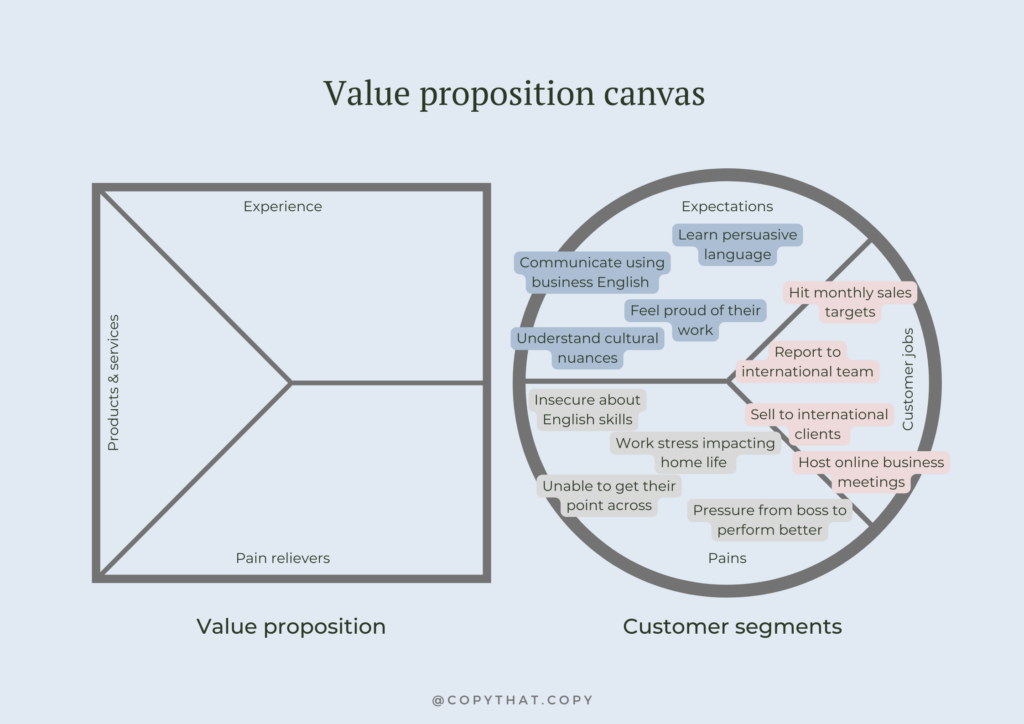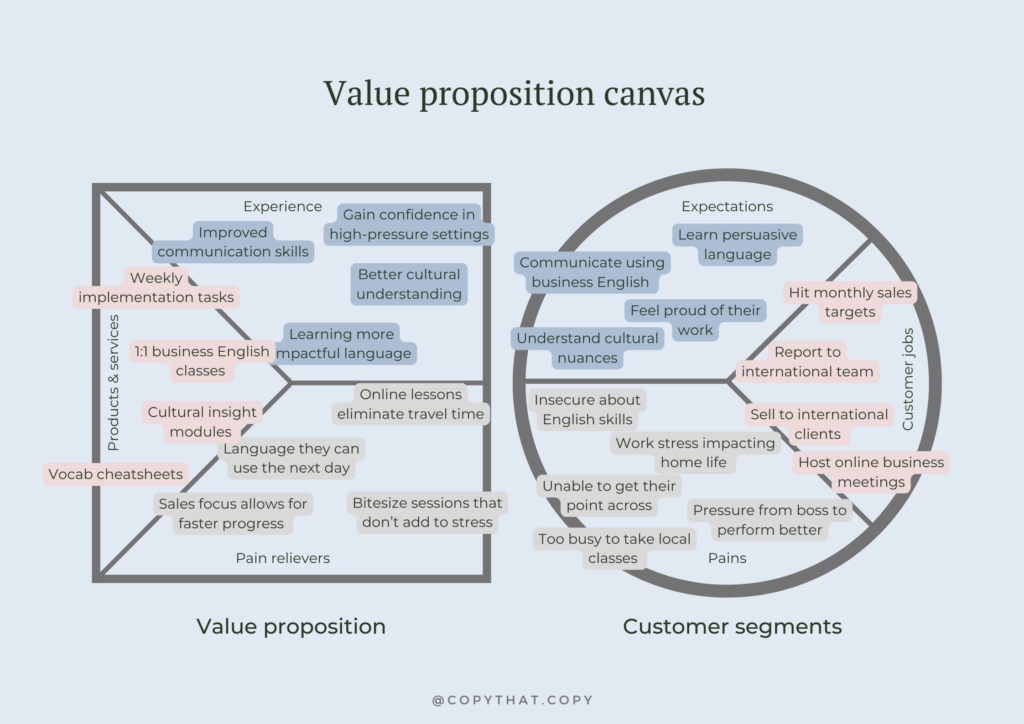One of the biggest misconceptions about marketing is that you need to show up more to sell more.
And it sort of makes sense.
If you post everyday, you probably WILL grow your audience.
And if you grow your audience, some of them probably will become students.
But… will they be the students you want?
That all depends on how you’re communicating with the world.
This is what’s known as your ‘messaging’. And it’s one of the most important, yet often overlooked aspects of building a language school marketing plan.
Get it right, and you can maximise the return on investment of every campaign you run. But get it wrong, and no amount of ad spend will make a difference.
Whether you’re looking to get more out of your organic marketing or you’re undergoing a brand refresh, you’re in the right place.
Here’s how to create a solid messaging strategy for your language school.
What is a marketing message?
Your marketing message is a group of key ideas that concisely explain who you are, what you do and why students should learn with you.
It guides every campaign you run, making sure everyone is on the same page, and everything you share is consistent.
A strong marketing message should:
- Be unique to your business
- Speak to your audience’s pain points
- Have emotional appeal (more on that soon)
- Reflect your brand personality
And yes, it *should* do all of that in as few words as possible.
How do you create a language school messaging strategy?
Messaging is about as close as you can get to an ‘overnight marketing hack’. But like all overnight success stories, it takes a lot of behind-the-scenes work to make it happen.
We can break the process down into six key steps:
1. Understand your audience
Like most things in marketing, distilling your message starts with understanding who you’re speaking to. Without knowing this, it’s impossible to write effective copy.
So pull up a blank Google doc, and start answering these questions:
- Who are your ideal students? (Age, location, etc.)
- Why are they learning the language you teach?
- What’s their big scary language goal?
- What’s stopping them from reaching this goal?
- How is this problem impacting their lives?
- Have they tried to solve this problem before?
- Why hasn’t this worked?
This should give you a good idea of who you’re speaking to, what they’re struggling with and how they’re feeling.
But we won’t stop there.
Next, I recommend creating a ‘Value Proposition Canvas’. This is a simple framework that helps you align your customer insights with your product or service, so your message is built around their wants and needs.
You can either download a template like this or create a table in Google sheet and answer these questions:
Customer jobs
- What specific tasks or activities do your ideal students need to achieve?
- What problems are they trying to solve?
Expectations
- What does your ideal student want to achieve with a service like yours?
- What benefits would make them say ‘yes!’ to your offer?
- What emotions do they want to feel?
Pains
- What problems are your ideal students experiencing right now?
- How do these problems make them feel?
- What obstacles are standing in the way of them achieving their goals?
Here’s an example of a completed value proposition canvas for a fictional sales professional who needs to use English at work:

I mentioned earlier that your message should have an emotional appeal. That’s because this is what connects with the reader. We all buy products and services to solve a problem. But more than that, we buy into how solving that problem will make us feel.
The same applies to your ideal students.
Whether they’re looking for relief, excitement, pride or confidence, your message should trigger that emotion as they read it — ideally without actually saying the word. You can find an example in this post.
2. Assess what you do best
Once you understand who you’re speaking to, it’s time to reflect on who you are as a brand.
Why should students learn with you? How can you solve their problem? What makes you different from all the other language schools?
The answers to these questions form the other half of your value proposition map. So, head back to that document and start making notes on the following.
Experience
- What benefits does your product or service offer your ideal students?
- How does it add value to their lives or studies?
Pain relievers
- How does your product or service solve your ideal students’ problems?
Product & solutions
- Which specific products and services offer these benefits and solve these problems?

Once you’ve completed the map, you should be able to see how your service meets your audience’s needs. This will be key to developing that core stickier-than-syrup message.
But we’re getting ahead of ourselves. First, we want to take a look at the competition.
3. Analyse your competitors
Before you can craft a unique message, you need to know what your competitors are saying.
Start by listing the main competitors you’re aware of — be it online or in your physical location.
Then, browse their websites and social media channels to assess what they’re saying.
What are their main messages? What problems are they addressing? What benefits do they offer to solve them? More importantly, what do they fail to address?
Your goal should be to pinpoint the gap and fill it with a message unique to your brand.
4. Create a messaging house
Once you’ve gathered your research, it’s time for the fun part — building your messaging house. This is a simple structure that keeps your communication clear and focused.
Here’s how to organise it:
Overarching message
This is the roof of the house. It’s the main message that captures the essence of your brand and what you stand for. It’s what guides everything else you say and do and keeps it all congruent.
Let’s use Duolingo as an example.
Their main message is that they ‘make language free and fun for everyone’. This guides everything else they create — from their tagline, ‘Everyone can Duolingo,’ to calls to action like, ‘Expand your world in 35+ languages with Duolingo, the language learning app for everyone.’
Supporting messages
Underneath your main message, you’ll need 3-5 additional messages that support it — like the pillars of the house.
These should be strong enough to stand alone, so you can highlight different benefits across different touchpoints or campaigns. But they should still align with the overarching message, so as not to get confusing.
I’d say that one of Duolingo’s supporting messages is the fact that it’s ‘the world’s #1 way to learn a language.’
Proof points
Lastly, the bottom of your messaging house consists of the foundations — the undeniable facts that give students a reason to believe in your service.
These include things like exam pass rates, student testimonials, awards, events, number of students and any tangible actions you take to deliver your service.
For Duolingo, that includes:
- 300 million learners worldwide
- 35+ languages
- 500 university partners
Don’t worry — you don’t need numbers like that to be believable. A handful of testimonials, student stats or even qualifications will do just fine.
5. Write your brand story
Your brand story plays a key role in shaping how people see your school. Done well, it can connect with students on an emotional level and help build a community of loyal fans.
Although this is your brand story, it’s not actually about you. It’s about your reader — or, more specifically, what you can do for them.
In other words, you’ll want to avoid sharing the year-by-year breakdown of how your school started. This isn’t the ‘story’, and it’s unlikely to resonate with anyone.
Instead, use these prompts to pull out what people really care about:
- Why, how and when did you start your school or business?
- What problem do you aim to solve?
- Why are you motivated to solve this problem?
- What makes you different?
If you’re not sure where to start, here’s a classic example from a jeans manufacturer, Huit Denim. You’ll see that they’re telling their story using emotive language that draws the reader in and gets them to believe in the brand.
6. Define your tone of voice
Your brand story shapes how people see you, but your voice connects with them. So, once you know what you want to say, the final step is to decide how to say it.
Think about how you want your school to come across. Do you want to be fun and playful, like Duolingo? Or are you more serious and professional?
Your tone should match your brand identity and the emotions you want to evoke in your students. So again, prioritise their preferences in this process! If they don’t resonate with your style, they won’t stick around.
How many marketing messages do you need?
You’ll need one main messaging house that reflects your brand as a whole.
But you may need to create smaller messaging houses that address more focused benefits for specific services or campaigns.
For example, if you’re promoting exam preparation courses and conversational language lessons, each will need its own messaging framework. That way, you can target the right people with clear, specific copy.
Need help with this?
Creating a messaging strategy for your language school can be a daunting task, but I hope this post helps break it down.
And if you still don’t really know where to start? I’m here to help.
Check out my Power Hour or get in touch to chat about my messaging services.



View comments
Leave a comment